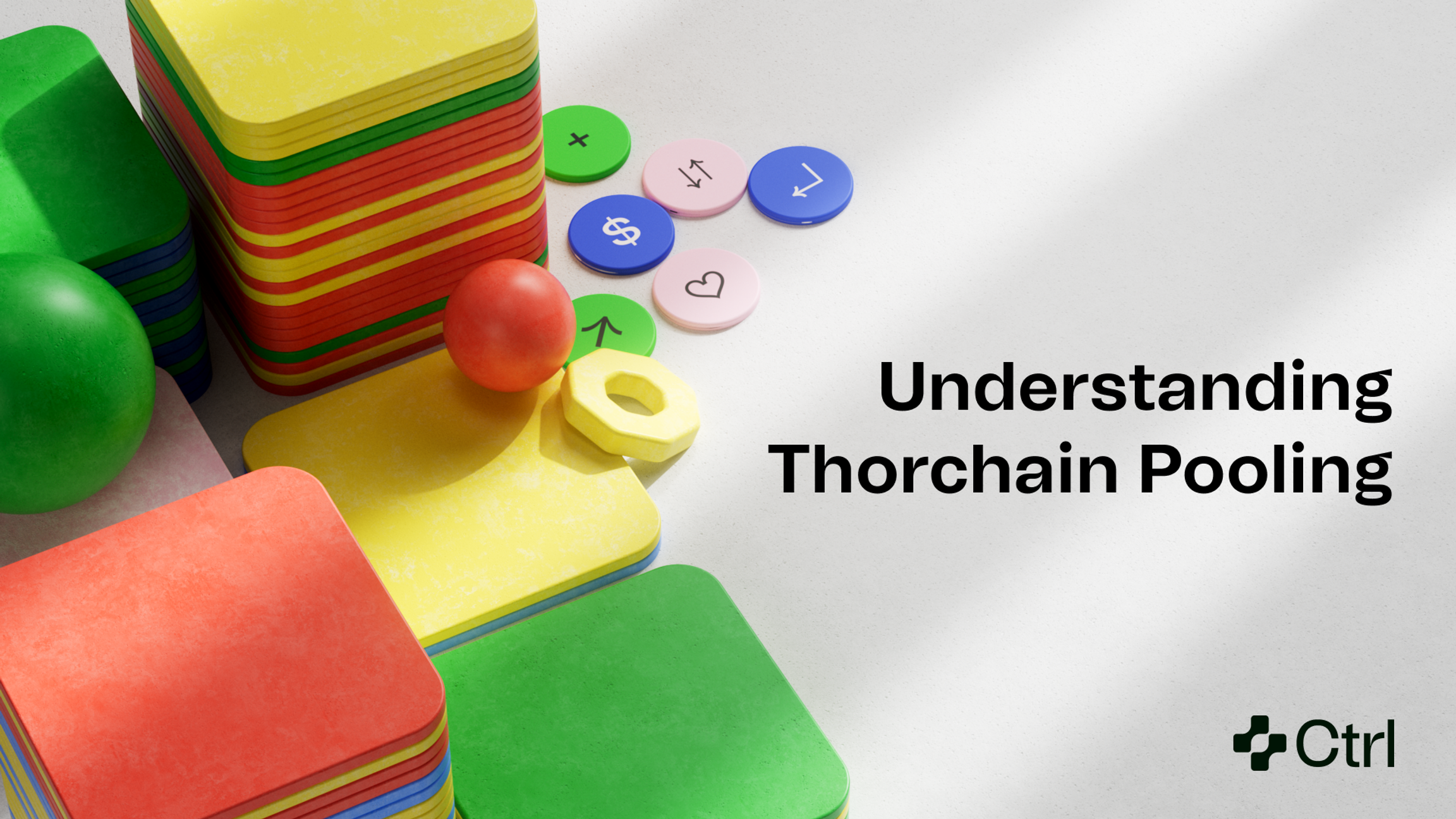Understanding Thorchain pooling: symmetrical vs asymmetrical strategies

Thorchain Pooling: What is the Difference Between Symmetrical and Asymmetrical Pooling?
Thorchain, a decentralized liquidity network, offers a unique opportunity for users to pool assets and earn rewards through its liquidity pools (LPs). A key aspect of using Thorchain effectively is understanding the two types of pooling strategies available: symmetrical pooling and asymmetrical pooling. Each has distinct features and benefits depending on a user’s assets and goals. This article will explain both strategies and how they can optimize your decentralized finance (DeFi) strategy.
What is Thorchain Pooling?
At the core of Thorchain’s liquidity network are the pools that allow users to provide liquidity for various asset pairs. Liquidity providers (LPs) are rewarded for contributing their assets to these pools through trading fees and RUNE, Thorchain’s native token.
Thorchain ensures that every liquidity pool remains balanced in a 50:50 ratio between RUNE and the other asset, such as Bitcoin (BTC) or Ethereum (ETH). The pool's structure ensures fair pricing and efficient trades between different cryptocurrencies on the network.
Understanding the two types of deposits—symmetrical and asymmetrical—is essential for maximizing your returns while managing risk.
Symmetrical Pooling on Thorchain
Symmetrical pooling is the more traditional and straightforward method of providing liquidity. In this strategy, a liquidity provider deposits two assets into the pool at a 50:50 value ratio. For Thorchain pools, this means that half of the deposit must be in RUNE, while the other half is in another asset (BTC, ETH, etc.).
How Symmetrical Pooling Works
For example, if you wish to join the BTC/RUNE pool, you would need to deposit an equal value of BTC and RUNE. Let’s say you have $1,000 worth of BTC—this means you would also need to contribute $1,000 worth of RUNE to maintain the pool's 50:50 balance.
Once deposited, Thorchain will record both the liquidity provider’s RUNE address and the asset address (in this case, BTC) as linked to their LP position. When the provider decides to withdraw, they have two options:
- Symmetrical withdrawal: Withdrawing both assets in the same 50:50 ratio they were deposited in.
- Asymmetrical withdrawal: Withdrawing the entire amount in just one of the two assets, which Thorchain will facilitate by converting part of the other asset back to the preferred one.
Benefits of Symmetrical Pooling
- Predictable exposure: The 50:50 ratio ensures balanced exposure to both assets in the pool.
- Impermanent Loss Protection: Thorchain offers Impermanent Loss Protection (ILP) for liquidity providers, which helps mitigate the risk of losing value when one asset’s price fluctuates dramatically.
Symmetrical pooling is an ideal strategy for those who hold both RUNE and another asset and are looking for balanced exposure and predictable rewards.
Asymmetrical Pooling on Thorchain
Thorchain also provides flexibility through asymmetrical pooling, a strategy where liquidity providers can contribute just one asset instead of both. This option is particularly useful for users who may not hold any RUNE but want to participate in Thorchain liquidity pools.
How Asymmetrical Pooling Works
Let’s say you hold BTC but don’t have any RUNE. You can still add BTC to the BTC/RUNE pool by making an asymmetrical deposit. In this case, Thorchain will automatically convert half of your BTC into RUNE to maintain the pool’s 50:50 balance.
However, this conversion incurs a slip fee, which depends on the pool's depth and the size of your deposit relative to it. The deeper the pool and the smaller the deposit, the lower the fee.
When you choose to withdraw your funds later, you can only withdraw the same asset you initially deposited (BTC in this example). Thorchain will reverse the earlier conversion, swapping half the RUNE back to BTC, allowing you to withdraw the full amount in BTC.
Benefits of Asymmetrical Pooling
- Single asset participation: This method allows users to join liquidity pools without needing to hold RUNE.
- Flexible withdrawal: Asymmetrical withdrawals make it easy to exit a pool while staying in the same asset class, which could be useful if a liquidity provider wants to avoid converting back to RUNE.
While asymmetrical pooling offers convenience, it comes with a potential downside: since the pool automatically converts half of your asset into RUNE, you are exposed to the price movements of both assets in the pool. This also means that impermanent loss protection (ILP) applies to both assets, so the final withdrawal amount will depend on the value of both BTC and RUNE at the time of exit.
Symmetrical vs Asymmetrical Pooling: Which is Right for You?
When deciding between symmetrical and asymmetrical pooling, it’s important to consider your current assets and long-term strategy.
Choose Symmetrical Pooling If:
- You already hold both RUNE and another asset like BTC or ETH.
- You want equal exposure to both assets and more predictable rewards.
- You prefer a more straightforward approach to liquidity provision with balanced risk.
Choose Asymmetrical Pooling If:
- You only hold one asset and don’t want to buy RUNE.
- You want to add liquidity quickly without converting assets beforehand.
- You’re comfortable with the potential exposure to price changes in RUNE after depositing.
Both strategies can be profitable, but understanding how they impact your risk and reward profile is key to maximizing your returns on Thorchain.
Conclusion
Thorchain’s flexibility in offering both symmetrical and asymmetrical pooling allows liquidity providers to choose a strategy that suits their asset holdings and risk tolerance. Whether you want balanced exposure through symmetrical deposits or prefer the convenience of asymmetrical pooling, knowing the pros and cons of each will help you optimize your participation in the Thorchain ecosystem.
By carefully choosing the right pooling method, you can better manage your exposure to impermanent loss while earning rewards through Thorchain’s decentralized liquidity pools.